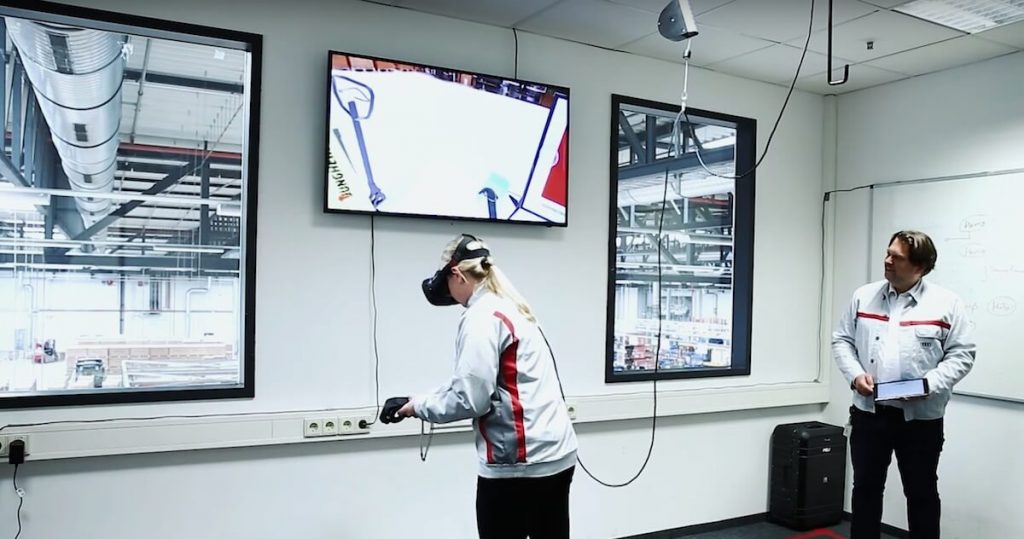Most employees avoid training at all costs because it’s generic, boring, and time-consuming. They’d rather be doing something more productive, like hitting their sales targets or tackling that pile of paperwork. But immersive learning gives you the power to pique their interest and develop activities that resonate with them. They have the opportunity to cultivate crucial skills, identify limiting performance behaviors, and expand their experiential knowledge. All without taking real-world risks that might lead to lower sales, lower customer service scores, and workplace accidents.
Exploration demo experiences
Produce immersive training demo experiences that offer a deep dive into products, processes, and policies. For example, the VR training could feature the inner workings of your latest product. Employee training participants simply click on the individual components to learn more about them and the purpose they serve. Exploration demo experiences offer two notable benefits. Firstly, employees are better equipped to pitch the products or perform the tasks because they understand the dynamics. Secondly, they can help customers troubleshoot known issues because they’ve seen all the technical elements up close.
Immersive training for sales
Your sales staff may know the ins and outs of your new product line. They may have memorized the catalog by heart and know all the features and specs. But do they know how to pitch it to customers? Or how to qualify leads? Or how to actively listen to identify consumers’ needs? Immersive sales tutorials give them the opportunity to watch a pro in action in order to mimic those behaviors on the job and improve customer satisfaction. They can also personalize the pitch once they have a template to work from. Be sure to include some common sales mistakes to avoid, such as being too forceful with the customer or forgetting about add-ons and upgrades.
Interactive problem-solving scenarios
Every job position and department has unique obstacles they must face in the workplace. Develop immersive problem-solving scenarios that encourage them to use all the available training resources and skills to reach the best outcomes. For example, a virtual customer appears and sums up their pain points. Then employees must choose from a list of products based on the information and past experiences. You can also use this approach for co-worker conflicts, COI breaches, and customer service issues, such as how to handle complicated returns or resolve complaints.
Customer service immersive training walkthroughs
Speaking of customer service, another meaningful immersive learning activity is step-by-step walkthroughs. Show them how to complete tasks and build interpersonal skills that tie into their job roles. Include supplemental links so that they can explore related processes or expand their product knowledge. These walkthroughs can also be followed by VR training simulations that allow them to apply what they learned. The catch is that every online training activity should be self-contained. For instance, one walkthrough covers the return process so that employee training participants can explore all the steps and protocols while another addresses product exchanges or offers service packages.





